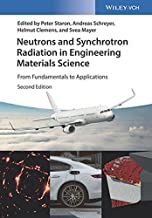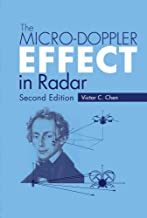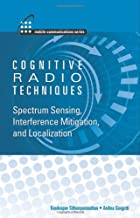Neutrons & Synchrotron Radiation in Engineering Materials Science: From Fndamentals to Applications
Original price was: ₹15,054.00.₹12,043.20Current price is: ₹12,043.20.
ISBN: 9783527335923
Author/Editor: Peter Staron
Publisher: John Wiley
Year: 2017
1 in stock (can be backordered)
Description
Retaining its proven concept, the second edition of this ready reference specifically addresses the need of materials engineers for reliable, detailed information on modern material characterization methods. As such, it provides a systematic overview of the increasingly important field of characterization of engineering materials with the help of neutrons and synchrotron radiation. The first part introduces readers to the fundamentals of structure-property relationships in materials and the radiation sources suitable for materials characterization. The second part then focuses on such characterization techniques as diffraction and scattering methods, as well as direct imaging and tomography. The third part presents new and emerging methods of materials characterization in the field of 3D characterization techniques like three-dimensional X-ray diffraction microscopy. The fourth and final part is a collection of examples that demonstrate the application of the methods introduced in the first parts to problems in materials science.
With thoroughly revised and updated chapters and now containing about 20% new material, this is the must-have, in-depth resource on this highly relevant topic.
Additional information
| Weight | 1.188 kg |
|---|
Product Properties
| Year of Publication | 2017 |
|---|---|
| Table of Contents | List of Contributor XVII Preface to Second Edition XXIII Part I General 1 1 Microstructure and Properties of Engineering Materials 3 Helmut Clemens, Svea Mayer, and Christina Scheu 1.1 Introduction 3 1.2 Microstructure 4 1.3 Microstructure and Properties 10 1.4 Microstructural Characterization 12 2 Internal Stresses in Engineering Materials 21 Anke Kaysser-Pyzalla 2.1 Definition 21 2.2 Origin of Residual Macro- and Microstresses 25 2.3 Relevance 45 3 Textures in Engineering Materials 55 Heinz G. Brokmeier and Sangbong Yi 3.1 Introduction 55 3.2 Measurement of Preferred Orientations 58 3.3 Presentation of Preferred Orientations 59 3.4 Interpretation of Textures 62 3.5 Errors 67 4 Physical Properties of Photons and Neutrons 73 Andreas Schreyer 4.1 Introduction 73 4.2 Interaction of X-ray Photons and Neutrons with Individual Atoms 74 4.3 Scattering of X-ray Photons and Neutrons from Ensembles of Atoms 79 5 Radiation Sources 83 5.1 Generation and Properties of Neutrons 83 Ina Lommatzsch,Wolfgang Knop, Philipp K. Pranzas, and Peter Schreiner 5.2 Production and Properties of Synchrotron Radiation 90 Rolf Treusch Part II Methods 105 6 Stress Analysis by Angle-Dispersive Neutron Diffraction 107 Peter Staron 6.1 Introduction 107 6.2 Diffractometer for Residual Stress Analysis 108 6.3 Measurement and Data Analysis 112 6.4 Examples 116 6.5 Summary and Outlook 120 7 Stress Analysis by Energy-Dispersive Neutron Diffraction 123 Javier Santisteban 7.1 Introduction 123 7.2 Time-of-Flight Neutron Diffraction 123 7.3 TOF Strain Scanners 126 7.4 A Virtual Laboratory for Strain Scanning 131 7.5 Type II Stresses: Evolution of Intergranular Stresses 134 7.6 Type III Stresses: Dislocation Densities 135 7.7 Strain Imaging by Energy-Dispersive Neutron Transmission 138 7.8 Conclusions 140 8 Residual Stress Analysis by Monochromatic High-Energy X-rays 145 Rene V. Martins 8.1 Basic Setups 145 8.2 Principle of Slit Imaging and Data Reconstruction 148 8.3 The Conical Slit 149 8.4 The Spiral Slit 152 8.5 Simultaneous Strain Measurements in Individual Bulk Grains 155 8.6 Coarse Grain Effects 156 8.7 Analysis of Diffraction Data from Area Detectors 157 8.8 Matrix for Comparison and Decision Taking Which Technique to Use for a Specific Problem 158 9 Residual Stress Analysis by Energy-Dispersive Synchrotron X-ray Diffraction 161 Christoph Genzel and Manuela Klaus 9.1 Introduction 161 9.2 Fundamentals of Energy-Dispersive X-ray Diffraction Stress Analysis 162 9.3 Experimental Setup 167 9.4 Examples for Energy-Dispersive Stress Analysis 168 9.5 Final Remarks 173 10 Texture Analyses by Synchrotron X-rays and Neutrons 179 Sangbong Yi, Weimin Gan, and Heinz G. Brokmeier 10.1 Texture Measurements on Laboratory Scale 179 10.2 Texture Measurements at Large Scale Facilities 182 10.3 Conclusion 193 11 Basics of Small-Angle Scattering Methods 197 Philipp K. Pranzas 11.1 Introduction 197 11.2 Common Features of a SAS Instrument 197 11.3 Contrast 198 11.4 Scattering Curve 198 11.5 Power Law/Scattering by Fractal Systems 200 11.6 Guinier and Porod Approximations 201 11.7 Macroscopic Differential Scattering Cross-section 202 11.8 Model Calculation of Size Distributions 202 11.9 Magnetic Structures 203 12 Small-Angle Neutron Scattering 207 Philipp K. Pranzas and Andre Heinemann 12.1 Introduction 207 12.2 Nanocrystalline Magnesium Hydride for the Reversible Storage of Hydrogen 208 12.3 Precipitates in Steel 210 12.4 SiO2 Nanoparticles in a Polymer Matrix An Industrial Application 213 12.5 Green Surfactants 213 13 Anomalous Small-Angle X-ray Scattering 217 Ulla Vainio 13.1 Introduction 217 13.2 Theory 218 13.3 Experiments 223 13.4 Example: ASAXS on Catalyst Nanoparticles 223 13.5 Summary and Outlook 223 14 Imaging 227 Wolfgang Treimer 14.1 Radiography 227 14.2 Tomography 240 14.3 New Developments in Neutron Tomography 244 15 Neutron and Synchrotron-Radiation-Based Imaging for Applications in Materials Science From Macro- to Nanotomography 253 Felix Beckmann 15.1 Introduction 253 15.2 Parallel-Beam Tomography 256 15.3 Macrotomography Using Neutrons 258 15.4 Microtomography Using Synchrotron Radiation 264 15.5 Summary and Outlook 271 16 Mu-Tomography of Engineering Materials 275 Astrid Haibel and Julia Herzen 16.1 Introduction 275 16.2 Advantage of Synchrotron Tomography 275 16.3 Applications and 3D Image Analysis 276 16.4 Image Artifacts 282 16.5 Summary 286 Part III New and Emerging Methods 291 17 3D X-ray Diffraction Microscope 293 Henning F. Poulsen,Wolfgang Ludwig, and Soren Schmidt 17.1 Basic Setup and Strategy 294 17.2 Indexing and Characterization of Average Properties of Each Grain 296 17.3 Mapping of Grains and Orientations 300 17.4 Combining 3DXRD and Tomography 304 17.5 Outlook 305 18 3D Micron-Resolution Laue Diffraction 309 Gene E. Ice 18.1 Introduction 309 18.2 The Need for Polychromatic Microdiffraction 309 18.3 Theoretical Basis for Advanced Polychromatic Microdiffraction 311 18.4 Technical Developments for an Automated 3D Probe 313 18.5 Research Examples 318 18.6 Future Prospects and Opportunities 324 Part IV Applications 327 19 The Use of Neutron and Synchrotron Research for Aerospace and Automotive Materials and Components 329 Wolfgang Kaysser, Jorg Esslinger, Volker Abetz, Norbert Huber, Karl U. Kainer, Thomas Klassen, Florian Pyczak, Andreas Schreyer, and Peter Staron 19.1 Introduction 329 19.2 Commercial Passenger Aircraft 331 19.3 The Light-Duty Automotive Vehicle 341 19.4 Other Transport Systems 352 20 In situ Experiments with Synchrotron High-Energy X-rays and Neutrons 365 Peter Staron, Torben Fischer, Thomas Lippmann, Andreas Stark, Shahrokh Daneshpour, Dirk Schnubel, Eckart Uhlmann, Robert Gerstenberger, Bettina Camin, Walter Reimers, Elisabeth Eidenberger-Schober, Helmut Clemens, Norbert Huber, and Andreas Schreyer 20.1 Introduction 365 20.2 In situ Dilatometry 366 20.3 In situ Study on Single Overload of Fatigue-Cracked Specimens 368 20.4 In situ Cutting Experiment 370 20.5 In situ Study of Precipitation Kinetics Using Neutrons 372 20.6 Conclusions 373 21 Application of Photons and Neutrons for the Characterization and Development of Advanced Steels 377 Elisabeth Eidenberger-Schober, Ronald Schnitzer, Gerald A. Zickler, Michael Eidenberger-Schober,Michael Bischof, Peter Staron, Harald Leitner, Andreas Schreyer, and Helmut Clemens 21.1 Introduction 377 21.2 Characterization Using Synchrotron Radiation 378 21.3 Characterization Using Small-Angle Neutron Scattering (SANS) 382 21.4 Conclusions 388 22 The Contribution of High-Energy X-rays and Neutrons to Characterization and Development of Intermetallic Titanium Aluminides 395 Thomas Schmoelzer, Klaus-Dieter Liss, Peter Staron, Andreas Stark, Emanuel Schwaighofer, Thomas Lippmann, Helmut Clemens, and Svea Mayer 22.1 Introduction 395 22.2 High-Energy X-rays and Neutrons 396 22.3 In situ Investigation of Phase Evolution 398 22.4 Atomic Order and Disorder in TiAl Alloys 409 22.5 Recovery and Recrystallization during Deformation of TiAl 412 22.6 Lattice Parameter and Thermal Expansion 418 22.7 Conclusions 419 23 In situ Mu-Laue: Instrumental Setup for the Deformation of Micron Sized Samples 425 Christoph Kirchlechner, Jozef Keckes, Jean S.Micha, and Gerhard Dehm 23.1 Introduction 425 23.2 Experimental Instrumentation 427 23.3 Discussion 433 23.4 Conclusion 436 24 Residual Stresses in Thin Films and Coated Tools: Challenges and Strategies for Their Nondestructive Analysis by X-ray Diffraction Methods 439 Manuela Klaus and Christoph Genzel 24.1 Introduction 439 24.2 Compilation of Approaches to Meet the Challenges in Thin Film X-ray Stress Analysis (XSA) 441 24.3 Final Remarks and Recommendations 447 Index 451 |
| Author | Peter Staron |
| ISBN/ISSN | 9783527335923 |
| Binding | Hardback |
| Edition | 2 |
| Publisher | John Wiley |
You must be logged in to post a review.






Reviews
There are no reviews yet.